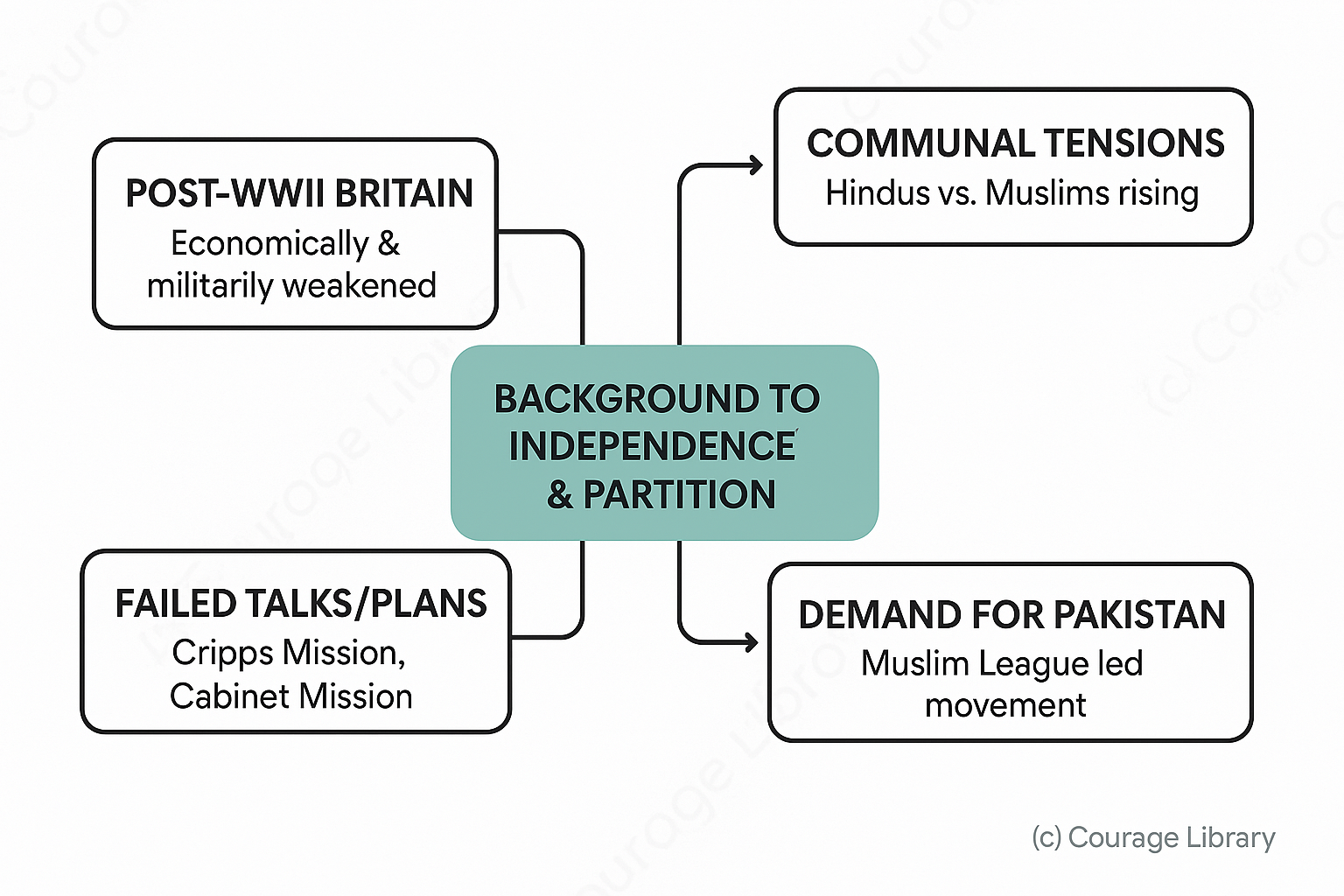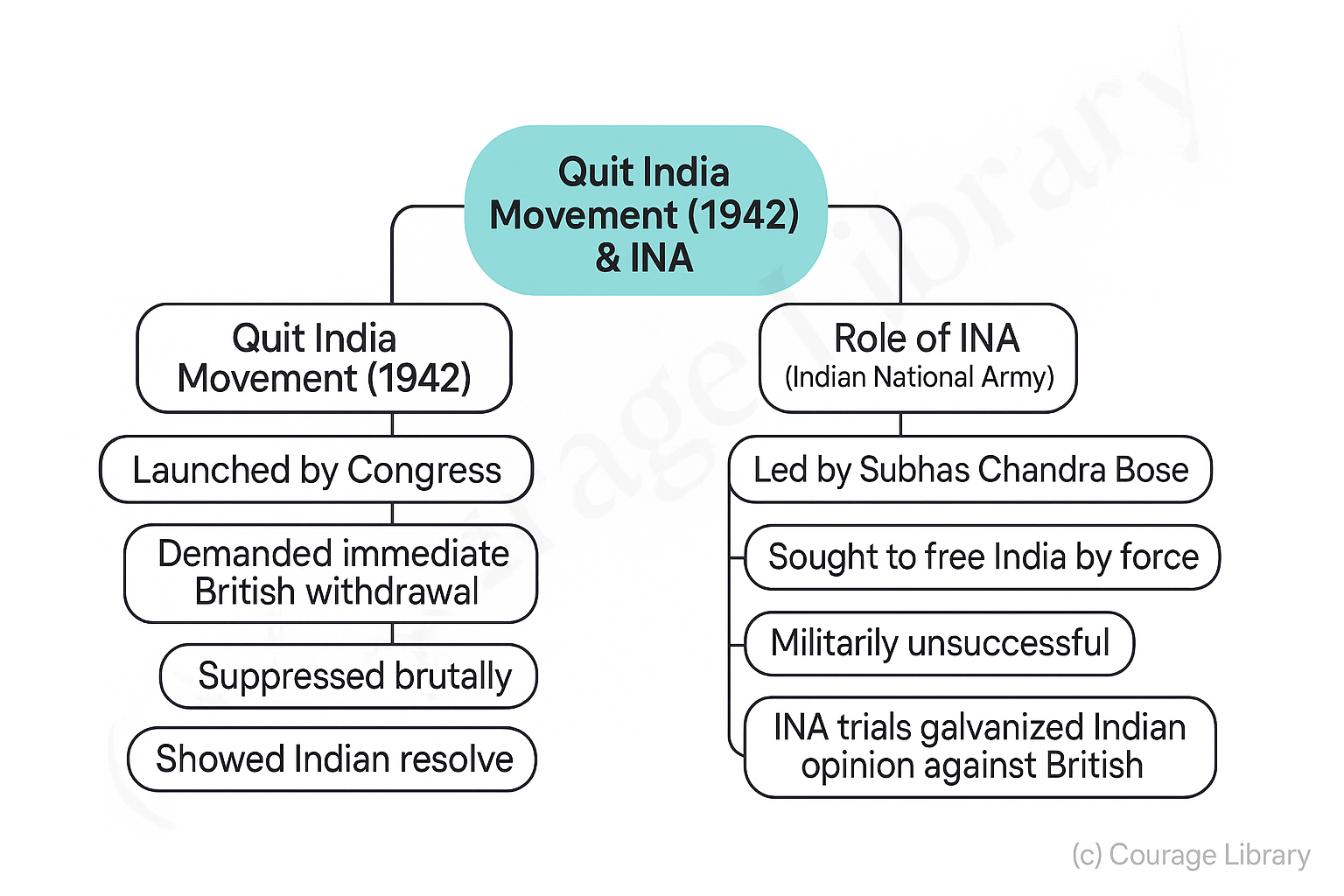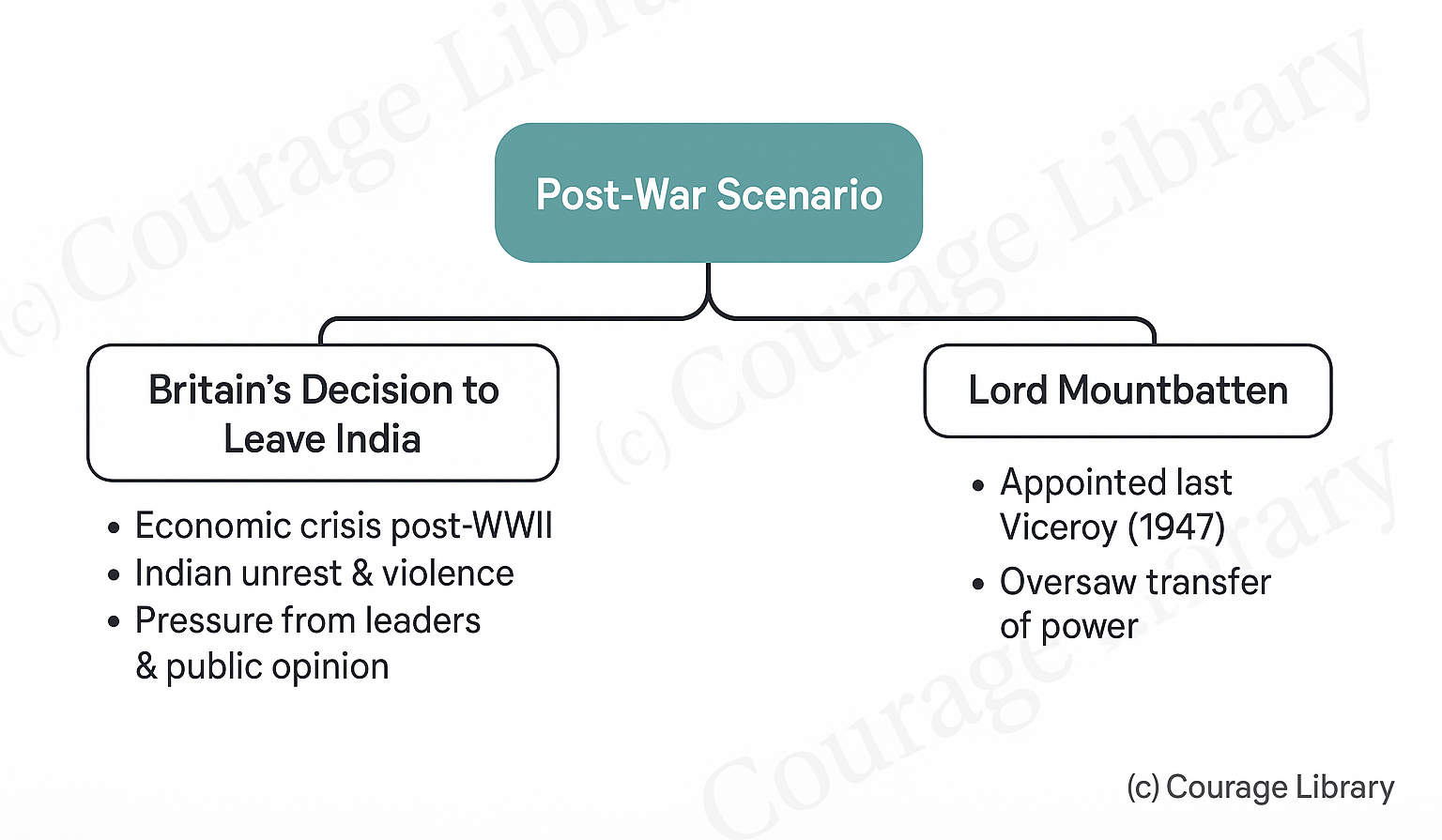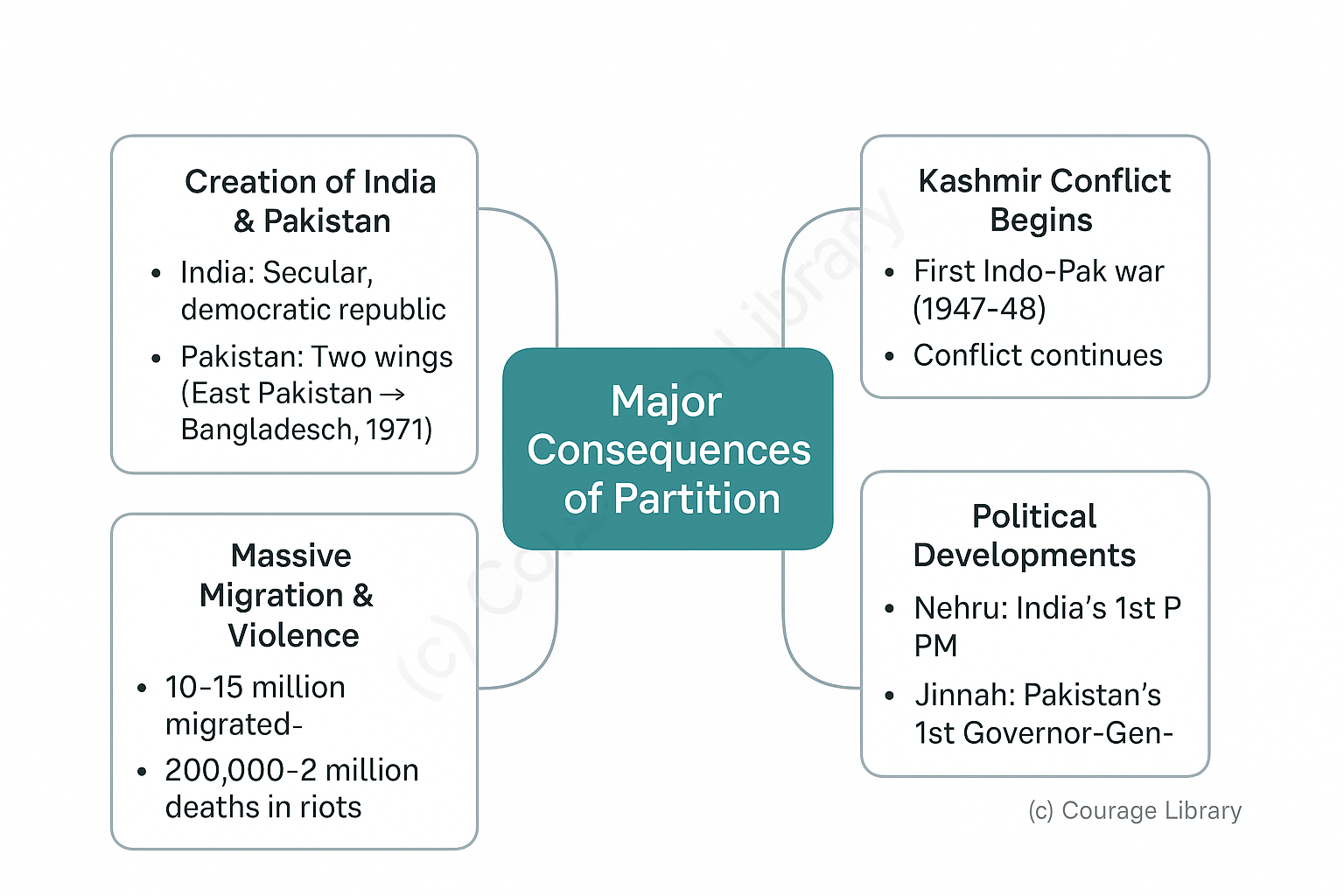SSC CGL - Detailed Guide 2025
Self-Paced Course

Independence and Partition (1947)
Reference: Lucent GK, NCERT Class 6–12
Background to Independence & Partition
- After WWII, Britain was weakened economically and militarily, making it difficult to hold India.
- Increasing communal tensions between Hindus and Muslims.
- Failure of previous talks and plans (Cripps Mission, Cabinet Mission).
- Demand for Pakistan (separate Muslim state) led by Muslim League.
- Rising communal violence, especially after Direct Action Day (August 1946).

Key Events Leading to Independence and Partition

1. Quit India Movement (1942)
- Launched by Congress demanding immediate British withdrawal.
- Suppressed brutally but showed Indian resolve.
2. Role of Indian National Army (INA)
- Led by Subhas Chandra Bose, the INA sought to free India by force.
- Although militarily unsuccessful, INA trials galvanized Indian opinion against British.
3. Post-War Scenario
- Britain decided to leave India due to:
- Economic crisis post-WWII
- Indian unrest and violence
- Pressure from Indian leaders and public opinion
- Lord Mountbatten appointed as last Viceroy in 1947 to oversee transfer of power.

Partition Plan and Independence

1. Mountbatten Plan (June 3, 1947)
- Proposed partition of British India into two dominions:
- India (Hindu majority)
- Pakistan (Muslim majority: West & East Pakistan)
- Princely States given option to join either India or Pakistan.
- Transfer of power set for August 15, 1947.
- Formation of two independent countries with separate Constituent Assemblies.
- Agreement on division of assets, armed forces, and civil services.
2. Indian Independence Act, 1947
- Passed by British Parliament in July 1947.
- Abolished British sovereignty over India.
- India and Pakistan became Dominions of the British Commonwealth.
- Ended British paramountcy over princely states.
- Legal basis for partition and transfer of power.


Major Consequences of Partition
- Creation of India and Pakistan: India became a secular, democratic republic; Pakistan initially had two wings (later East Pakistan became Bangladesh in 1971).
- Massive Migration & Violence: Around 10–15 million migrated; estimated 200,000 to 2 million died in riots.
- Kashmir Conflict Begins: First Indo-Pak war over Kashmir in 1947–48; conflict continues.
- Political Developments: Nehru became India's first PM; Jinnah became Pakistan's first Governor-General.
Important Dates
| Date | Event |
|---|---|
| June 3, 1947 | Mountbatten Plan announced |
| July 18, 1947 | Indian Independence Act passed |
| August 15, 1947 | India and Pakistan become independent |
Developed By Jan Mohammad
Next
Start Your SSC CGL Journey Now!
Join Courage Library to experience disciplined study and expert support.
Be a Couragian!